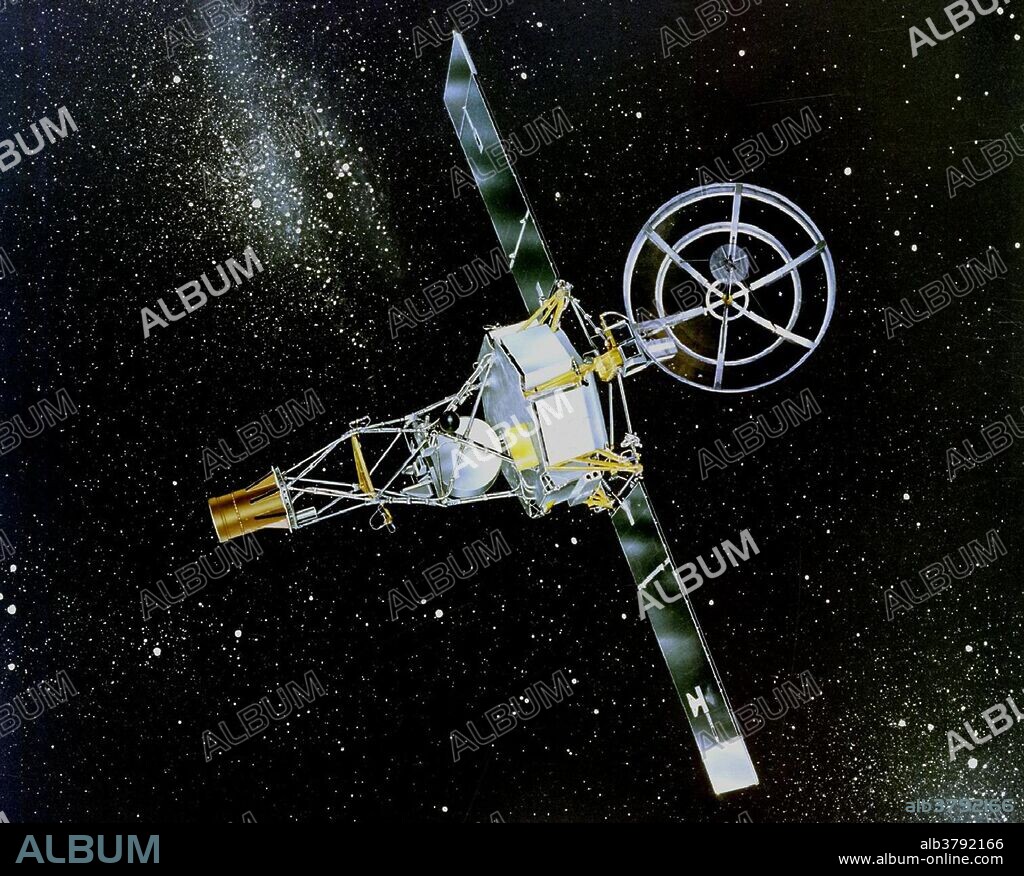alb3792166
Mariner 2, Venus Space Probe, 1962

|
Add to another lightbox |
|
Add to another lightbox |



Buy this image.
Select the use:

Title:
Mariner 2, Venus Space Probe, 1962
Caption:
Mariner 2 was the world's first successful interplanetary spacecraft. Launched August 27, 1962, on an Atlas-Agena rocket, Mariner 2 passed within about 21,000 miles of Venus, sending back valuable new information about interplanetary space and the Venusian atmosphere. Mariner 2 recorded the planet's temperature for the first time, revealing the its very hot atmosphere of about 900 degrees Fahrenheit. The spacecraft's solar wind experiment was the first to measure the density, velocity, composition and variation over time of the solar wind. Mariner 2 (Mariner-Venus 1962) was an exact copy of Mariner 1. The primary mission was to receive communications from the spacecraft in the vicinity of Venus and to perform radiometric temperature measurements of the planet. A second objective was to measure the interplanetary magnetic field and charged particle environment. Mariner 2 scanned the planet with its pair of radiometers, revealing that Venus has cool clouds and an extremely hot surface.
Credit:
Album / Science Source / NASA/JPL
Releases:
Model: No - Property: No
Rights questions?
Rights questions?
Image size:
4200 x 3377 px | 40.6 MB
Print size:
35.6 x 28.6 cm | 14.0 x 11.3 in (300 dpi)
Keywords:
1960S • 1962 • 20 20TH XX XXTH TWENTIETH CENTURY • 20 XX TWENTIETH CENTURY • 20TH CENTURY • 20TH • 60 60'S DECADE SIXTY YEARS • 60 60'S DECADE YEARS SIXTY SIXTIES • 60'S • 60S • ART • ARTIST CONCEPT • ARTWORK • ASTRONOMIA • ASTRONOMICAL • ASTRONOMY • AUGUST 27 • AUGUST 27TH • CONCEPT • CONCEPTUAL ART • CONCEPTUAL • DEEP SKY • DEEP SPACE • DIAGRAM • DRAWING • GRAPHIC • ILLUSTRATION • ILLUSTRATIONS • MARINER 2 • MARINER MISSION • MARINER PROGRAM • MARINER R MISSION • MARINER-VENUS 1962 • OUTERSPACE • PLANETARY FLYBY • ROBOTIC • SCIENCE • SIXTIES • SIXTIES, THE • SPACE (COSMOS) • SPACE ART • SPACE EXPLORATION • SPACE PROBE • SPACE RACE • SPACE • SPACECRAFT • SPATIAL • TECHNOLOGICAL • TECHNOLOGY • TWENTIETH CENTURY • UNMANNED • VENUS SPACE PROBE • YEARS DECADE'S SIXTY SIXTIES 60 60 1960
 Pinterest
Pinterest Twitter
Twitter Facebook
Facebook Copy link
Copy link Email
Email
